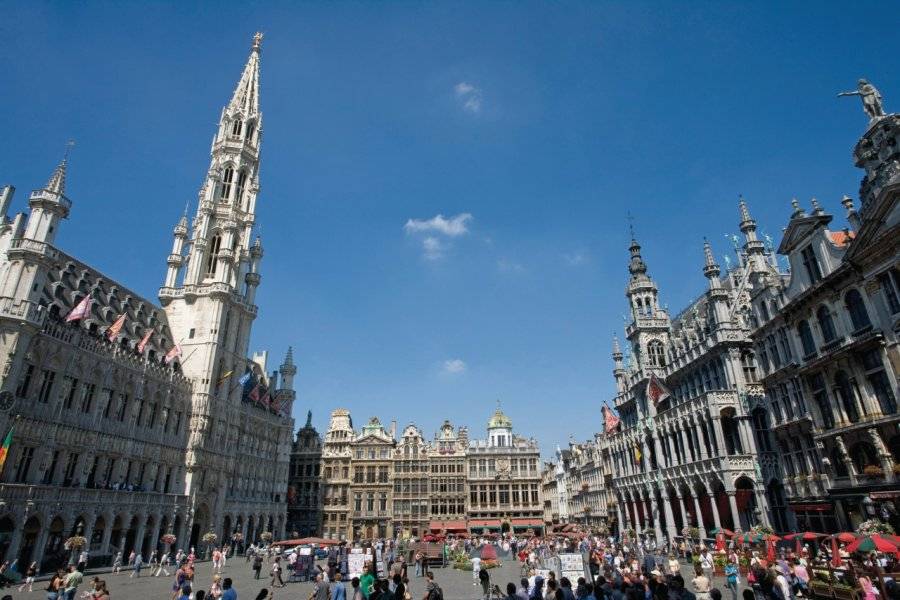GRAND-PLACE
The "most beautiful square in the world". In all modesty, this is how the Belgians call this jewel where the town hall is located.
First and foremost, the discovery of Brussels begins with the Grand-Place. At first glance, it's hard to find. Explanation: the ancients had the wisdom to locate the city's navel away from the main traffic routes. In all, seven streets branch off from the Grand-Place, all of which once led to the seven gates of the first city wall. The quasi-rectangle of the Grand-Place groups the guild houses around the town hall, a facade for craftsmen and merchants.
Beauty born of tragedy. The Grand-Place owes its current appearance to a tragedy: the bombardment of Brussels by Louis XIV's French troops from August 13 to 15, 1695. The ruined Grand-Place was rebuilt in 3 years, for the vast majority of buildings, as attested by the numerous cartouches on the houses. An exceptional feat when you think about it!
The only survivor of those terrible days was thetown hall, whose walls held firm despite the fire that ravaged it. This pure Brabant Gothic building is the focal point of the square. Built in several phases, it is adorned with 300 statues, none of them medieval, since they were added at the end of the 19th century when the building was renovated. Most of the statues depict historical figures from Brussels. At the top of the Town Hall spire, the archangel St. Michael watches over Brussels.
Essentially Baroque (or neo-Baroque) in style, the guild houses rival each other in beauty and symbolism. Although many of them have been restored and/or rebuilt, particularly in the 19th century, they still retain the grandeur that the bourgeoisie of Brussels wanted to give them when rebuilding after the bombardment.
Opposite the Town Hall is the King's House, built in the 19th century in neo-Gothic style, like an echo of its neighbor across the street. For many years, it has housed the Brussels City Museum.
The refuge of Victor and Karl. Victor Hugo spoke very highly of the Grand-Place. Exiled to Brussels at the beginning of Napoleon III's reign, he lived in two of its houses: the Moulin à vent, part of the Maison des Ducs de Brabant complex, and the Maison du Pigeon, former home of the painters' guild. Another 19th-century exile was Karl Marx, who lived between 1845 and 1848 in the capital of the new Belgian state. His regular haunt was the estaminet de la Maison du Cygne. Together with his compatriot Friedrich Engels, he organized meetings of the Communist League.
Did you know? This review was written by our professional authors.
Members' reviews on GRAND-PLACE
The ratings and reviews below reflect the subjective opinions of members and not the opinion of The Little Witty.

The best at Bruxelles - Brussel and around

RESTAURANT VINCENT

SOURCES DU LIBAN

LE PASSAGE











Make sure you connect it with the more leisurely Place St. Catherine which is only a 12 min stroll away.
Nice boutiques and cake-makers in the little 'ruelles' leading from the Grand'Place